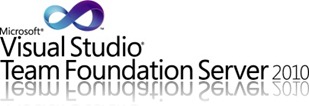by Dmitry Kirsanov
18. November 2023 20:00

Among the several precision disciplines that define our roles as testers, feature confirmation and regression testing stand out as true stalwarts. They anchor our work in structure - feature confirmation acts as a beacon, shining light on the path defined by product requirements, while regression testing is a rigid indoor exercise, guarded by the blueprint of specific instructions dictating the what and the how of our testing.
Yet, there is another technique that seems to dance in the diffused, stimulating glow of the software testing spectrum. Like a swing dancer in a ballroom of waltzes, exploratory testing breaks away from the steady pattern and exhales a breath of fresh air into the otherwise rigorous, often impervious field of testing. Born from the context-driven school of thought, exploratory testing advocates for a hands-on, reflexive approach, allowing testers to tap into their creative reserves. More...
by Dmitry Kirsanov
16. November 2023 20:00

You've been through the process, that complex yet thrilling journey of transforming an abstract concept into a functional system. But as the wheel of time rolls on, the evolution of your product brings on complexities. Not only do you have to build new functionalities, but you also have to ensure they do not disrupt any past ones. Enter the Regression Testing. More...
by Dmitry Kirsanov
14. November 2023 15:03

Software testers have an integral role to play in the software development cycle with their principal task being ensuring that the system's features work as per the specified requirements. If you're engaged in developing fresh software or enhancing an existing one, your testing team will most likely invest considerable time in feature verification.
However, feature testing isn't an exclusive reserve of the development process. When adopting commercial off-the-shelf software, you're likely to undertake a good deal of feature-by-feature testing. Similarly, for software being developed in an iterative manner, testers progressively authenticate each new feature as it becomes part of the deployed environment. More...
by Dmitry Kirsanov
10. November 2023 11:48

In every realm of work, there is a uniqueness that demands recognition. This truth shines brightly in the world of software testing. It is critical to understand that no two software development projects, even those sharing a technological DNA, can truly be considered identical. Various variables - from the environment within which they're created to the team orchestrating their inception – build unique compositions of software ecosystems. And for us, the software testers, it is paramount to understand and consider these peculiar compositions.
Let's dig a little deeper into some specific examples. Picture this - a software product is on your testing radar. You must determine its peculiarities that could significantly influence test execution. First, you have to understand the technology underlying your product. Is it a web application? A mobile application? Perhaps it's a comic mixing of both? You need to understand what languages and software libraries are used, the platforms the product operates on, and the product’s unique architecture. Is there an API serving as a bridge to the client? How does it store data: is it in a relational or a document database? Also, try to grasp how the software is integrated with other systems and the nature of these interactions? Are they real-time integrations, or defined in batches? Finally, ask yourself, is the software custom-built, or is it an off-the-shelf solution being installed? More...
by Dmitry Kirsanov
9. November 2023 07:00

From my more than two decades of expertise in software development, DevOps, and system administration, one lesson I’ve learnt is the importance of software testing. It’s not by chance that this post tackles the significance of learning software testing theory and techniques. In my tenure, testing has proven to be the backbone of software development- for both test specialists and developers.
Software testers often find themselves thrust into the field with little formal training on the same. The lack of structured learning on software testing for testers equates to a missing puzzle piece in the grand scheme of software development. While it might seem to work fine for developers, the long-term impacts are evident. More...
by Dmitry Kirsanov
12. September 2013 09:00

Continuous Integration is extremely important part of software development process, but is also the least used at the same time. Even at relatively big software shops, the continuous integration usually is something, that everyone heard of, but that’s it.
Among all the things you can do to shift the focus of your software developers to what they really have to do instead of what they have to do now, the continuous integration is perhaps the most rewarding. More...
by Dmitry Kirsanov
14. March 2012 02:30
 Once your Team Foundation Server is performing automated UI testing on daily basis, it starts to check your code when needed. When Team Foundation Server finds that your software is doing something unexpected, it automatically creates the bug work item. This time we are going to talk about these bugs, how to get most out of them, and how to use that functionality to boost the effectiveness of your software development. More...
Once your Team Foundation Server is performing automated UI testing on daily basis, it starts to check your code when needed. When Team Foundation Server finds that your software is doing something unexpected, it automatically creates the bug work item. This time we are going to talk about these bugs, how to get most out of them, and how to use that functionality to boost the effectiveness of your software development. More...
by Dmitry Kirsanov
10. March 2012 12:00
 Microsoft Visual Studio 2010 Team Foundation Server has two most important features – the source control and the build automation. Although other features are very important as well, these two are pretty much enough to consider the purchase of the Team Foundation Server.
Microsoft Visual Studio 2010 Team Foundation Server has two most important features – the source control and the build automation. Although other features are very important as well, these two are pretty much enough to consider the purchase of the Team Foundation Server.
Today we are going to talk about the Build Management system of Visual Studio 2010 Team Foundation Server. More...
by Dmitry Kirsanov
17. February 2012 11:19
 What could be easier, for a software developer, than to write a kiosk application? You set the rules, you have only 4 buttons to deal with and users just can’t do anything bad or unexpected. What could be wrong with such solution?
What could be easier, for a software developer, than to write a kiosk application? You set the rules, you have only 4 buttons to deal with and users just can’t do anything bad or unexpected. What could be wrong with such solution?
The absence of proactive thinking.
More...
by Dmitry Kirsanov
4. January 2012 17:10
 This is part 4 of Visual Studio Team Foundation Server 2010 for Developers walkthrough. Last time we were speaking about the unit tests, and that was useful, but very basic foundation of what you can do in terms of Test Driven Development. However, we can conventionally separate testing in Visual Studio and Team Foundation Server to 3 levels. So today we are going to talk about the second level – Advanced Testing techniques, such as Test Impact Analysis, Coded UI Tests and Load Tests.
This is part 4 of Visual Studio Team Foundation Server 2010 for Developers walkthrough. Last time we were speaking about the unit tests, and that was useful, but very basic foundation of what you can do in terms of Test Driven Development. However, we can conventionally separate testing in Visual Studio and Team Foundation Server to 3 levels. So today we are going to talk about the second level – Advanced Testing techniques, such as Test Impact Analysis, Coded UI Tests and Load Tests.
If that’s only the middle layer of complex testing in Visual Studio 2010, what’s in the last one, you might ask? There will be test automation using Hyper-V virtualization with Virtual Machine Manager and yes, we will discuss it later as well.
But today we’ll begin with Test Impact Analysis. More...